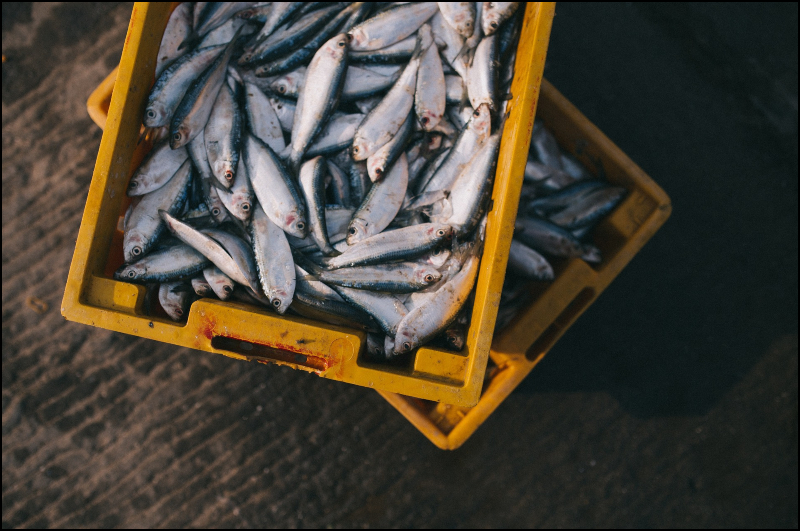

Global food systems are in the spotlight this week with the highly controversial UN Food Systems Summit (UNFSS) planned for Thursday, 23rd September, and a number of governments, civil society groups, and corporate players trying to influence its outcomes.
Even the degree to which these outcomes can be influenced has been hotly debated. Still, a key development occurred last week when scientists at Stockholm Resilience Centre and Stanford University, in collaboration with EAT, launched their landmark Blue Food Assessment (BFA). The assessment is the outcome of an ambitious research agenda aiming to support food and nutrition security over the coming decades and represents the most comprehensive analysis of blue foods (foods that are farmed or caught in fresh- or saltwater) to date.
The BFA’s key findings come at an important moment for the future of our planet. They have direct relevance for the Food Systems Summit this week as well as the 49th Session of the World Committee on Food Security (CFS) in October and even COP26 in early November. After reviewing the main results of the first five BFA articles (four more are still to be released), I’ll illustrate how these robust scientific analyses speak to some of the key issues up for debate at these next three global meetings.
Blue Food InsightsIn addition to their landmark contributions to the scientific literature on food systems, the BFA authors have also put together an immersive article in Nature, a report for decision makers, and a series of policy briefs that address various aspects of their results. For that reason, I will not attempt a comprehensive summary of the material launched last Thursday. Instead, I highlight a few key messages that bear special relevance for UNFSS, CFS 49, and COP26.
Decision makers must include blue foods in food and nutrition strategies. While blue foods are often left out of national policies on food and nutrition, demand for them is likely to double by 2050. At the same time, intentionally ramping up production could increase the delivery of micronutrients to those who most need them, especially women and children in developing countries, while also reducing the risk of heart disease in developed countries by displacing demand for red and highly processed meats. Some types of blue foods, like farmed oysters and seaweeds as well as small pelagic fish like sardines and herring, are also much more environmentally sustainable than land-based animal agriculture.
Blue foods are highly diverse, but food and nutrition policies must rise to the challenge rather than ignoring their potential. The diversity of blue food production was a theme present in each of the five BFA papers published last week. From lobsters caught in traps off the coast of Maine, to tuna caught by drifting longlines in the Central Pacific, to tilapia raised in ponds at a refugee camp in Kenya, blue foods have wildly different environmental impacts, nutritional values, and economic potential. In many studies, they have been represented only by a few species or lumped together as “seafood.” This practice is understandable, but it cannot continue. Understanding blue foods and harnessing their potential as part of a just, healthy, and sustainable future requires robust science and context-specific policies.
Diversity in blue food production, especially among small-scale producers, is an asset that must be harnessed. Amid widespread concerns that the UNFSS is too focused on and dominated by the small number of corporate interests that control industrial agriculture, the BFA and the science behind it challenge the industrial narrative. Its analysis of small-scale fisheries and aquaculture (SSFA) shows that the small-scale production of blue foods is crucial for a resilient and equitable future. Even despite power imbalances and limited access to capital, SSFA provide food to about one billion and livelihoods to millions around the world. They are also a key part of many cultures and their diversity results in more capacity to adapt to climate change, COVID-19, and other shocks.
Acting now on climate change will help secure food and livelihoods for years to come. While the impacts of climate change have been studied for specific fisheries and ecosystems, the BFA paper on climate impacts is the first to model risk levels for aquatic food systems at the national level. The authors found that meeting the commitments in the Paris Agreement would significantly limit the negative impacts of climate on blue food production. A high emissions scenario, on the other hand, is likely to result in compounding risks for those countries most dependent on inland and marine fisheries, especially in tropical developing states.
Planning a Blue Food FutureThe BFA papers published last week provide important insights for the future of blue foods and the transformation of food systems as a whole.
First, while there is general agreement that food systems are in dire need of transformation, there are widely diverging visions of what that transformation should look like. Many of the organizers behind the U.N. Food Systems Summit, for example, are proposing a vision of expanded industrial agriculture that is unlikely to deliver on its promises of food security and inclusive development. The BFA, on the other hand, has the potential to break through this myopic focus on just one type of food system, both because it highlights the diversity of aquatic food production and because its messages are derived from robust, data-driven analysis. The BFA’s disciplinary positionality has potential to change the discussion precisely because it uses the sources of knowledge and modes of analysis most convincing to the advocates of homogenous, industrial food systems while at the same time providing different conclusions.
Second, the BFA is good news for those who are concerned about food sovereignty and the democratic governance of food systems. From demand for seafood to climate impacts on aquatic food systems, the BFA repeatedly highlights the importance of formulating policies that are context specific. Attention to context is not just a practical requirement of governing the world’s highly diverse aquatic food systems; it is also the best way to develop supply chains that are adaptable, resilient, and culturally appropriate. Governing in this way will require the participation, and even leadership, of local communities and will not be achieved through traditional technocratic means.
Finally, the BFA’s work on the impacts of climate change is a crucial piece of evidence for the international community ahead of COP26 in November. After decades of denial and delay on climate, the crisis has already arrived. The world desperately needs more ambitious nationally determined contributions (NDCs) as well as sufficient funding for mitigation and adaptation in developing countries. The BFA paper on climate provides a picture of both the humanitarian cost of further inaction and the possibility of a hopeful future if the international community meets its obligations under the Paris Climate Agreement.
The next few months will have great influence on the future of our planet and the future of our food systems. If the Blue Food Assessment is duly considered, that influence could be for the better.
Related Articles
Select Payment Method
Pay by bank transfer
If you wish to make a donation by direct bank transfer please contact Fr Paul Hamill SJ treasurer@jesuits.africa. Fr Paul will get in touch with you about the best method of transfer for you and share account details with you. Donations can be one-off gifts or of any frequency; for example, you might wish to become a regular monthly donor of small amounts; that sort of reliable income can allow for very welcome forward planning in the development of the Society’s works in Africa and Madagascar.
Often it is easier to send a donation to an office within your own country and Fr Paul can advise on how that might be done. In some countries this kind of giving can also be recognised for tax relief and the necessary receipts will be issued.

